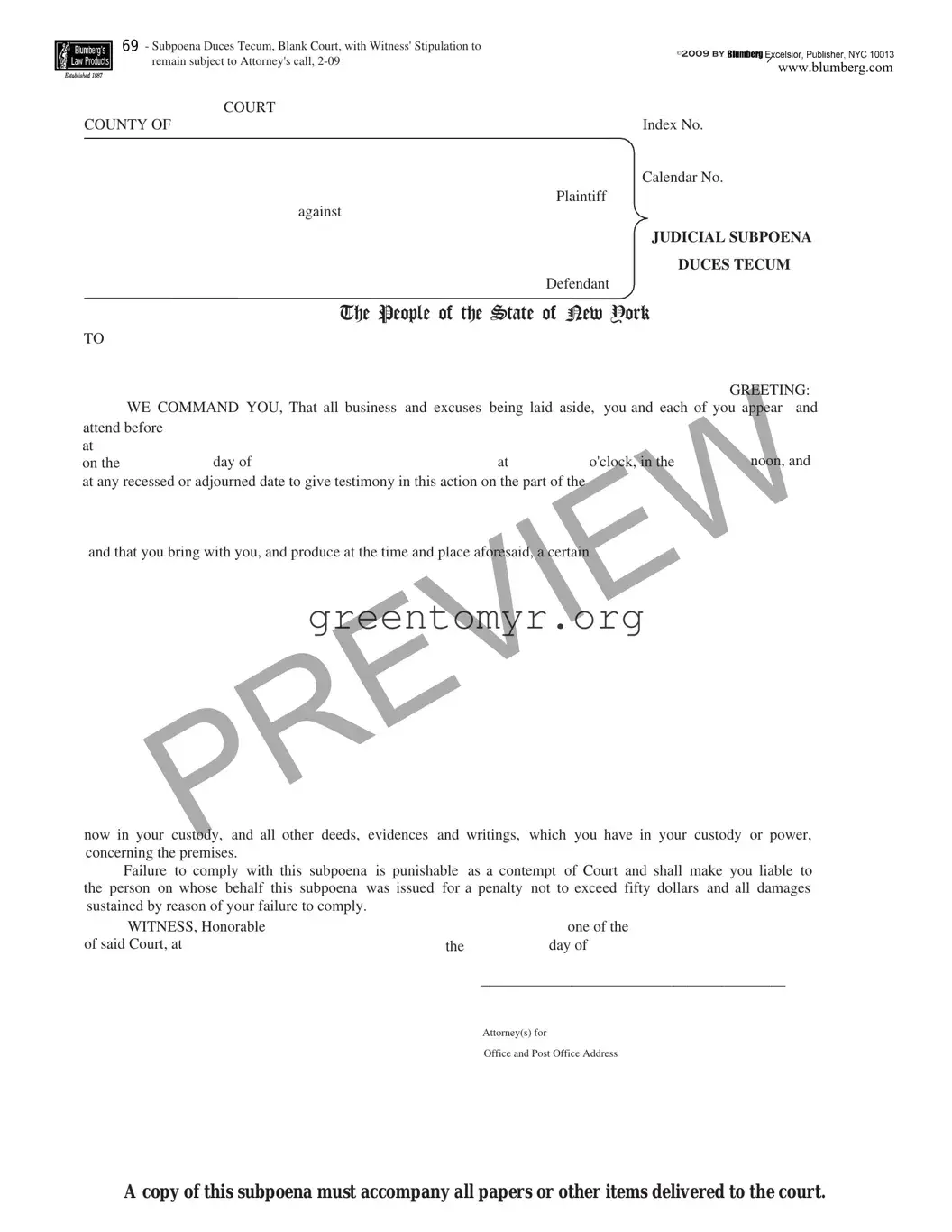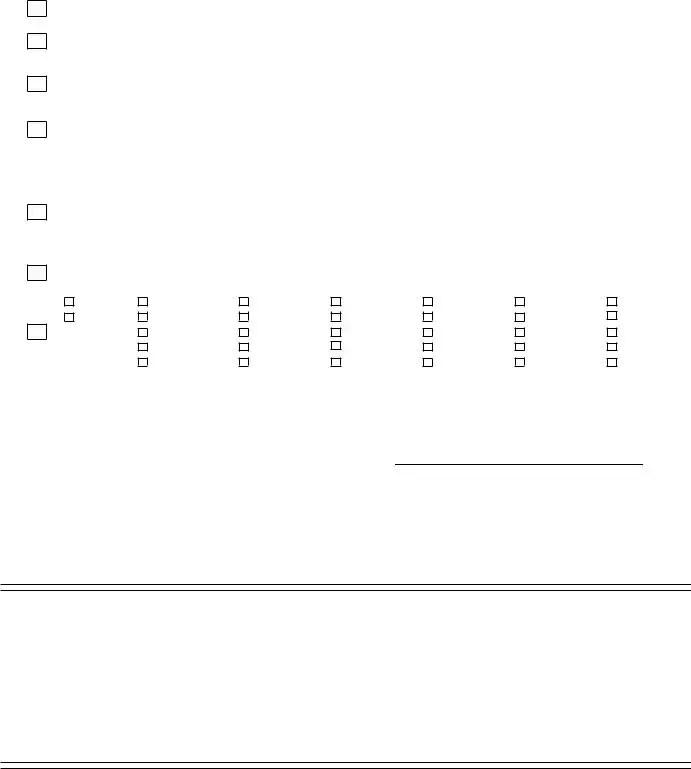What is a Judicial Subpoena?
A Judicial Subpoena, specifically a Subpoena Duces Tecum, is a legal document that orders an individual or entity to produce certain documents, records, or evidence in court. This type of subpoena ensures that relevant materials are available for a court case, which can significantly impact the judicial process.
Who can issue a Judicial Subpoena?
A Judicial Subpoena can be issued by an attorney representing a party in a legal action, or by the court itself. The attorney must be authorized and acting in a capacity that relates to the case at hand, ensuring that the subpoena is both valid and enforceable.
What happens if someone fails to comply with a Judicial Subpoena?
Failure to comply with a Judicial Subpoena may result in serious consequences. The individual or entity that does not respond can be held in contempt of court. This can lead to penalties that include fines, as well as potential damages incurred by the party that issued the subpoena.
How is a Judicial Subpoena served?
Serving a Judicial Subpoena involves delivering a copy of the subpoena to the designated witness. This can be achieved through various methods, including:
-
Personal delivery to the individual named in the subpoena.
-
Delivering to a person of suitable age at the individual's business or home.
-
AFFIXING the subpoena to the door of the premises.
-
Mailing a copy to the witness’s last known address.
Each method must comply with specific requirements to ensure the subpoena is considered valid.
A properly drafted Judicial Subpoena must contain essential information, including:
-
The court's name and location.
-
Case details, such as the index number and parties involved.
-
The date and time when the individual must appear.
-
A description of the documents or evidence required.
-
Signature of the issuing attorney or court official.
Including all required details ensures clarity and helps avoid any confusion about compliance.
Can an individual contest a Judicial Subpoena?
Yes, an individual subject to a Judicial Subpoena can contest it. If someone believes the subpoena is unreasonable or overly burdensome, they may file a motion to quash (invalidate) the subpoena in court. This action must be taken promptly to avoid compliance before the court evaluates the merits of the objection.
Is there a timeline for complying with a Judicial Subpoena?
A specific timeline for compliance is typically outlined within the subpoena itself. Generally, the recipient must respond by the date indicated in the subpoena, or within a reasonable time frame as determined by the legal process. It’s essential to act swiftly to avoid penalties.
What is the difference between a Judicial Subpoena and a deposition notice?
A Judicial Subpoena typically focuses on gathering documents for review in a legal proceeding, while a deposition notice generally requires an individual to provide testimony under oath. Though both play vital roles in discovery, they serve different purposes in the legal process.
Can a Judicial Subpoena be issued for electronic records?
Yes, a Judicial Subpoena can be issued for electronic records, including emails, texts, and other forms of digital evidence. Modern legal practices recognize the importance of electronic documentation, and these records can be crucial for substantiating claims in court.


